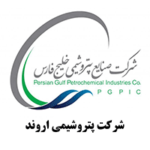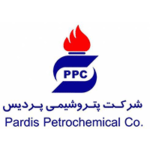Vinyl Coatings
The category of vinyl coatings includes the following types:
Wash Primer Undercoat
This two-component primer coating is based on polyvinyl butyral resin and acid hardener. This product is used to increase adhesion on non-ferrous metal surfaces such as aluminum, copper and galvanized surfaces.
This coating is applied in low thicknesses and its use alone is not recommended to protect metal surfaces, but it is simply used as an intermediate agent to increase adhesion, and after that, the implementation system of the next layers is done completely.
Surface Preparation for Applying Wash Primer Undercoat
The desired surface should be free of any contamination (such as oil, grease, dust, salts, etc.) which can be achieved by methods such as applying air pressure or washing with detergents and thinners. To enhance the adhesion of the light spray paints, it is recommended to create suitable roughness using sandpaper.
Painting Environment Conditions
The best temperature of the environment and work surface during painting is between 10-45 degrees Celsius. In order to achieve a suitable quality, it is recommended to paint as much as possible in enclosed environments. The ambient temperature during painting should be at least 3 degrees Celsius higher than the dew point of the environment to prevent the formation of water droplets on the surface.
Coating Application Method
First, thoroughly mix Part A, then mix Parts A and B together in the specified weight ratio and by adding the appropriate amount of T-420 thinner, bring it to the spray viscosity. Mix the paint in the container repeatedly and spray it by maintaining the right distance between the nozzle and the surface, taking into account the movement and speed of the air during application. It is necessary to observe the appropriate time interval between the execution of coatings, and avoid using the paint mixture after this time has elapsed.
Painting Equipment
- Airless spray with a nozzle diameter of 0.013-0.015 inch
- Conventional air spray with a nozzle diameter of 1.5-2 mm and a pressure of 3-5 atmospheres
- Brush and roller
Safety Precautions
- It is recommended to avoid continuous inhalation of the solvent vapors of this paint in enclosed spaces and preferably use appropriate safety equipment. In case of contact with skin and eyes, wash with plenty of water.
- This paint is flammable and should be kept away from heat, sparks, and open flames.
Vinyl Intermediate Paint
This paint is formulated based on vinyl chloride copolymer resin. The characteristics of this resin include high adhesion and fast drying, gloss stability, excellent resistance to weather conditions and chemicals. This paint is used in vinyl color systems as an intermediate layer, providing good properties for protecting metal and concrete surfaces.
Surface Preparation for Applying Vinyl Intermediate Paint
The desired surface must be free from any contamination, which can be achieved by methods such as air pressure application, washing with detergents and thinners.
If the surface has old paint, it is recommended to use methods such as wire brushing, mini sandblasting, and sanding to create suitable roughness and enhance paint adhesion.
Painting Environment Conditions
The best temperature of the environment and work surface during painting is between 10-40 degrees Celsius. In order to achieve a suitable quality, it is recommended to paint as much as possible in enclosed environments. The ambient temperature during painting should be at least 3 degrees Celsius higher than the dew point of the environment to prevent the formation of water droplets on the surface.
Coating Application Method
Mix the paint thoroughly with an appropriate mixer to achieve a uniform blend (it is essential to observe the appropriate time intervals between layers).
Depending on the type of spraying device (if spraying method is used), gradually add thinner to adjust the viscosity of the mixed paint.
Percentage of consumption of thinner for dilution at 25 degrees Celsius:
Brush and roller: 0-5%
Air spray: 10-20%
Airless spray: 0-10%
Painting Equipment
- Airless spray with a nozzle diameter of 0.013-0.015 inch
- Conventional air spray with a nozzle diameter of 2-5 mm and a pressure of 3-5 atmospheres
- Brush and roller
Safety Tips when Using Vinyl Intermediate Paint
- It is recommended to avoid continuous inhalation of the solvent vapors of this paint in enclosed spaces and preferably use appropriate safety equipment. In case of contact with skin and eyes, wash with plenty of water.
- This paint is flammable and should be kept away from heat, sparks, and open flames.
Vinyl Surface Coating
This coating is formulated based on vinyl chloride resin. It is used as the final layer in vinyl coating systems on both interior and exterior surfaces exposed to marine and industrial environments. It is also applied to epoxy coating systems. The characteristics of this coating include high adhesion, excellent chemical and moisture resistance, and it is recommended for use in high thicknesses.
Surface Preparation for Vinyl Surface Coating Application
The desired surface must be free from any contamination, which can be achieved by methods such as air pressure application, washing with detergents and thinners.
If the surface has old paint, it is recommended to use methods such as wire brushing, mini sandblasting, and sanding to create suitable roughness and enhance paint adhesion.
Painting Environment Conditions
The best temperature of the environment and work surface during painting is between 10-40 degrees Celsius. In order to achieve a suitable quality, it is recommended to paint as much as possible in enclosed environments. The ambient temperature during painting should be at least 3 degrees Celsius higher than the dew point of the environment to prevent the formation of water droplets on the surface.
Method of Applying Vinyl Surface Coating
Mix the paint thoroughly with an appropriate mixer to achieve a uniform blend (it is essential to observe the appropriate time intervals between layers).
Depending on the type of spraying device (if spraying method is used), gradually add thinner to adjust the viscosity of the mixed paint.
Percentage of consumption of thinner for dilution at 25 degrees Celsius:
Brush and roller: 0-5%
Air spray: 10-20%
Airless spray: 0-10%
Painting Equipment
- Airless spray with a nozzle diameter of 0.013-0.015 inch
- Conventional air spray with a nozzle diameter of 2-5 mm and a pressure of 3-5 atmospheres
- Brush and roller
Safety Tips during Application of Vinyl Surface Coating
- It is recommended to avoigd continuous inhalation of the solvent vapors of this paint in enclosed spaces and preferably use appropriate safety equipment. In case of contact with skin and eyes, wash with plenty of water.
- This paint is flammable and should be kept away from heat, sparks, and open flames.





















